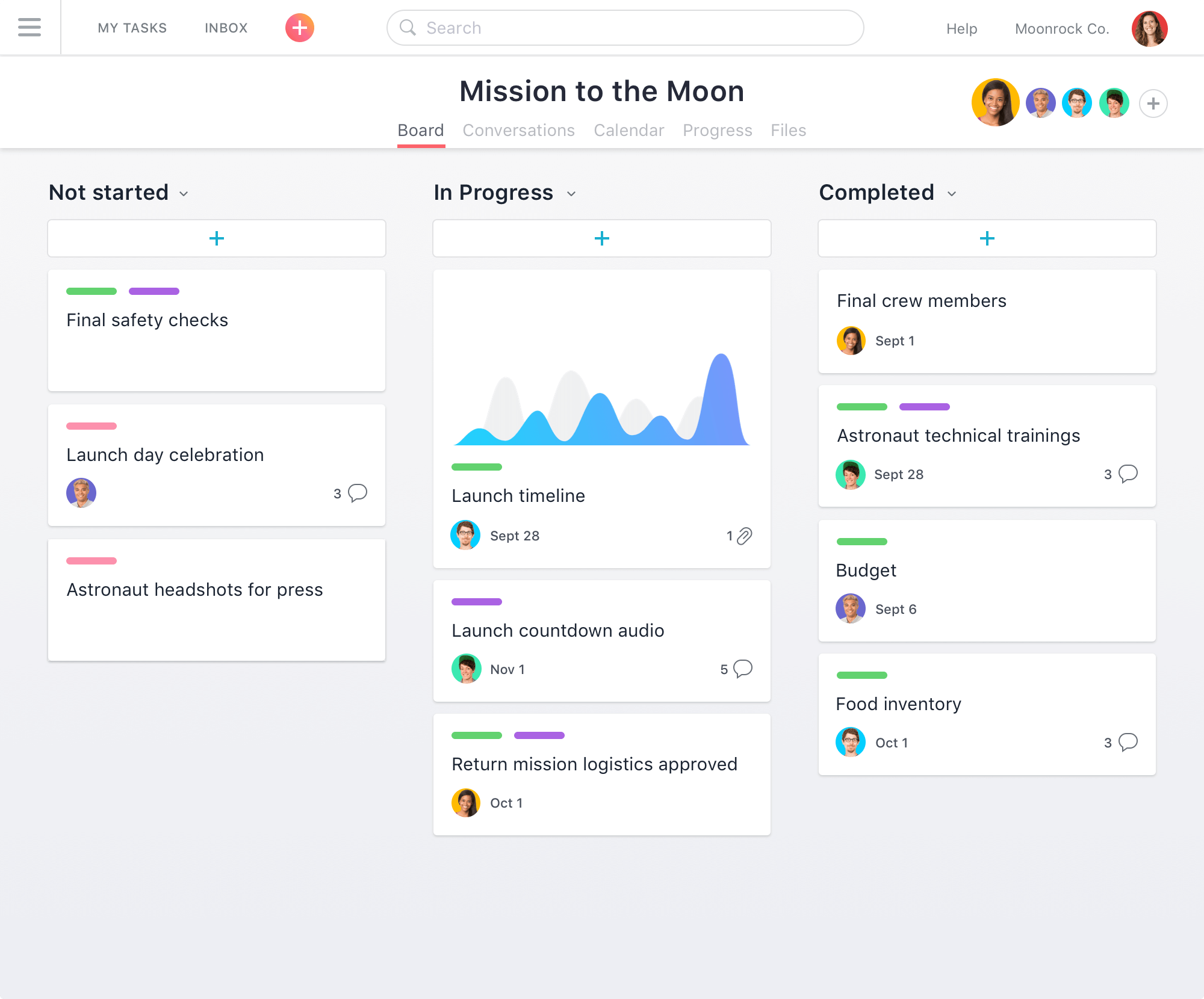3 mistakes that can cost your startup life

Productivity and personal effectiveness are critical to the success of any company, but especially to startups. Thanks to a huge arsenal of tools and libraries, it has become easier to upgrade and optimize your workflow for fast growth.
And if there is a lot of news about the newly created startups, then little is said about the real reasons for the closure.
World statistics on the reasons for closing startups looks like this:

But each of these errors has a different meaning for different markets. In addition to the obvious mistakes of startups, there are several unattractive, but very important. And today I would like to write about them. Over the past six years, I have advised more than 40 startups and will write about three errors that were repeated in each of them.
Mistake 1: Poor communication within the team
This error often occurs due to a lack of communication with the startup owner, but sometimes there are disagreements among several departments. An effective team is an essential component of a startup’s success.
According to a study conducted by Holmes, the total loss of profits in companies due to poor communication was $ 37 billion. In addition, more than 400 corporations in the United States and Britain, having interviewed employees, concluded that communication problems reduce productivity and cost companies an average of $ 62.4 million loss a year.
When there are only two or four people in a startup, all communication takes place in a voice: everyone understands his role, area of responsibility, and does his job. But as soon as new employees appear, all verbal agreements are forgotten, and communication in the mail and on Skype ceases to be effective.
What to do?
When the team expands and new employees come who do not know all aspects of the product, there is a need to structure communication. Here are some of the most popular internal communications applications for the team:
1. Slack. A messenger specially designed for conducting group projects. In it you can create thematic channels, integrate third-party services and communicate with the team many times faster.

2. Asana - a mobile and web application for managing projects in small teams. Each team can create for themselves a convenient workspace (workspace), which includes many projects. A project, in turn, can include many tasks. Users who have access to the task can supplement it, attach files and receive notifications about its status. Asana integrates perfectly with Slack: in the first, it is convenient to set tasks, in the second - to quickly discuss them.

3. Telegram - a service for quick messaging. This messenger, although not the most popular in the CIS countries, is great for informal communication and quick coordination of small things on a project. You can create several thematic groups to discuss projects.
If you need to control not only internal communication, but also communication with customers and the work of the sales department, CRM is indispensable. Ideally, if CRM allows you to create a single space for communication with customers and transfer all communications from instant messengers.
Most startups communicate with clients in Gmail, so cloud-based CRM with Gmail integration is the best solution for startups.
What else helps CRM?
- Synchronize information between departments;
- Reduce staff costs for routine
- Automate bulk mailing and followups
- Effectively manage sales
- Full access to customer data: purchase history, reason for their last call, etc. from any device anywhere in the world.
- Reporting for each department
- Full statistics on startup activities;
- Transfer communication with clients from mail, Calendar, Google Drive and Hangouts into one interface and get rid of a dozen tabs.
- Do not lose leads
Below I will briefly talk about the CRM for Gmail that we have worked with, with a reservation on the criteria that are important to us: an intuitive interface without onboarding, low price, and adequate support service.
There were few such CRMs - more precisely, only two.
NetHunt is a full-fledged CRM inside Gmail to automate the routine and control sales from the application to the transaction. It includes a set of functions for managing leads, developing relationships with customers, monitoring sales and closing deals.
Since the history of communication with customers is stored in the cloud, it is not lost with the departure of one of the sellers and is available directly from Gmail mail .

Of the pluses: a native interface, the most advanced functionality (in some CRMs you need to pay separately for additional chips like mass mailing), integration with G-Suite and price. For many startups, the price is just critical - a startup with 4-5 people will not get CRM more than 150 bucks a month (with NetHunt, the price per user / month is only $ 10). A separate plus is a personal manager and good support.
Of the minuses: there is no direct integration with sms-mailing services and not quite friendly design of the mobile version.
The second is the Estonian startup Pipedrive , which is distinguished by the fact that they have the ability to receive phone calls and a convenient application. True, the price they have for advanced functionality is $ 49 / person per month, which is not suitable for everyone.

Mistake 2: Deification of the Creator
The most common mistake that 90% of startups burn through is their creators. Having received the first round of investments, many of them perceive this stage as a personal high point. A special hell is the so-called "charismatic leaders" who, singing their startup and giving out interviews, completely abandon the technical improvement of their brainchild. They are ready for years to rush around with publications on The Verge or TechCrunch, while their startup will sadly stumble on the inertia of its former glory. You will often meet them at conferences with inspiring cases on how to get money from an investor and equip a design office, but they will not say a word about what is going on in the OS.
The inability to critically rethink the initial idea of a startup is the scourge of many business owners. Startup owners often turn to me for confirmation of the correctness of their ideas than for real expertise. They pass by market analysis, user feedback and employee opinions.
The owners of startups perceive constant failures and mistakes at every stage of product launch to the market or marketing as a personal challenge and try to prove that their idea will definitely work. And the rest just do not understand anything.
These are startups where the lion's share of the money is spent on marketing and PR. The bounce rate after the free trial is prohibitive, and G2Crowd and other platforms are filled with dozens of bad user reviews. Employees in such a startup are selected exclusively loyal: if at least one of them questions the Idea of the Great Creator, they quickly say goodbye to him.
The list of startups with a charismatic leader is led by Theranos, a blood analysis company that is now accused of fraud and misleading users. At the end of 2016, investors estimated it at $ 9 billion - higher than the sum of the valuation of the top 20 Silicon Valley startups combined. After a couple of years, the deception was revealed and the whole world found out that the idea, which the creator Elizabeth Holmes so believed in, could not be realized.
What to do?
In order for the external picture to coincide with the internal processes in the startup, you need a good team. If you are an early-stage start-up without external funding, a friendly team and cookies in the office cannot lure a good specialist.
There are several ways to put together a great team without attracting family friends:
1. Offer a share in a startup : it is a common practice to give options or shares in a company. More information about the distribution of capital in startups is written here . Since it is almost impossible to conclude an option agreement in a startup registered in Russia without creating an offshore company, see the following paragraphs.
2. Freedom and responsibility : for a good specialist, involvement and degree of freedom are often more important than money (but not for long). An employee who feels part of a cool project and can choose the strategy and tactics for achieving the goal at his discretion is able to accelerate startup growth by 3 times. Give him access to analytics, regularly give detailed feedback and share long-term plans. Such an employee understands the capabilities of a startup, can clearly assess deadlines and see product bottlenecks before users see them.
3. Take young talents : most talented students go unnoticed by employers for a long time. Look for junior developers and QA at hackathons, among course graduates and in specialized forums. Many training courses take real projects that the group is studying at. Offer your startup and watch out for talented students.
4. Provide an opportunity for development outside the profile : it is great if an employee can learn the interior of the company and pump not only in his own, but also in related fields. Startup provides an ideal field for comprehensive development, supports and cultivates the initiative of employees.
5. Train employees : employee development is an ideal investment in the future of a startup. Even if after six months one of them goes to a large corporation for a market salary. Arrange discounts on specialized conferences, mentor employees and buy access to online courses.
And the main advice is that even such a genius as you may be wrong. And then the feedback from employees will be perceived as possible growth points, and not as empty noise.
Mistake 3: Making a product without market monitoring
In 42% of cases, startups failed, because they solved non-existent problems. Even with a dream team, a brilliant leader and fantastic marketing, it may turn out that your product is not interesting to anyone. What went wrong in the process?
At Treehouse Logic, customization applications described the reason for the failure of their startup as follows: “We did not solve the global market problem. If we were to solve big enough problems, we could enter the global market with a scalable product. ”
The team until the last believes that the market is waiting for their product and does not understand why investors with AngelList do not invest in it immediately. Startups choose activities that are interesting to themselves, and not to investors. So, they create products and services for business, develop services involving high technologies, develop technologies in education and IoT. Venture investors are interested in fintech, logistics services, marketplaces, retail and food technology.
What to do?
Each startup idea goes through approximately the same cycle before its implementation. At each stage, it is important to pay attention to the nuances:
Stage 1 Writing a business plan. Many believe that this stage is for wimps, and go straight to the third stage. Almost half of all failed startups did not receive normal funding. Keep in mind that reaching a breakeven point may take longer than you think. A backup source of finance and reasonable spending are what distinguish thriving startups.
Stage 2 . Estimation of market demand. Explore your industry and monitor the latest trends. It is important to calculate which of them will linger for a long time: compare statistics and growth in the industry. Explore direct and indirect competitors: their positioning, market share, development. Who left the market and why?
Stage 3 . Get to know your target audience. Interviews, surveys in thematic groups. Ask on forums, on Facebook groups, friends of acquaintances. Such studies take up to 2 months, but not one of the startups I know has been left without insights after reading all the research results. It makes sense to create and test different hypotheses on a small part of a loyal audience.
If you are a young startup who has gone through all the stages on the path to stable growth or is just going to launch his project, share your mistakes in the comments.
All a great investment and growth!
All Articles